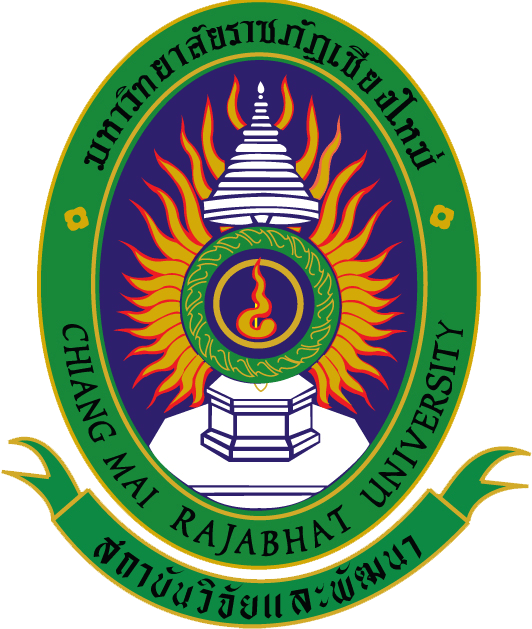
ระบบสารสนเทศงานวิจัย สถาบันวิจัยและพัฒนา มหาวิทยาลัยราชภัฏเชียงใหม่
Research Information System(RIS)
ปริมาณสารสำคัญ ฤทธิ์ทางชีวภาพ และเทคนิคการสกัดน้ำหอมระเหยจากดอกกุหลาบอินทรีย์จากกลุ่มเกษตรกรในอำเภอเชียงดาว จังหวัดเชียงใหม่ สู่การพัฒนาผลิตภัณฑ์น้ำหอมและเครื่องสำอาง
อาจารย์วาสนา ประภาเลิศ
คณะวิทยาศาสตร์และเทคโนโลยี
คำสำคัญ :
เลขทะเบียน :
1300-63-SCI-CMRU
บทคัดย่อ
งานวิจัยนี้มีวัตถุประสงค์เพื่อศึกษาเปรียบเทียบผลการสกัดน้ำมันหอมระเหยจากกุหลาบ 3 สายพันธุ์ ได้แก่ กุหลาบมอญแดงประเสริฐ กุหลาบมอญไกลกังวล และ กุหลาบบีชอปอังกฤษ ซึ่งปลูกด้วยเกษตรอินทรีย์โดยกลุ่มเกษตรกรใน อ.เชียงดาว จ.เชียงใหม่ การสกัดใช้เอทานอล วิเคราะห์ปริมาณสารสำคัญ และ ฤทธิ์การยับยั้งการเจริญเติบโตของจุลินทรีย์ก่อโรคบางชนิด รวมถึง ฤทธิ์การต้านอนุมูลอิสระ พบว่าได้สารสกัดเอทานอลของตัวอย่างดอกกุหลาบทั้งสามชนิดเป็นสีแดงเข้ม ร้อยละผลผลิต (% yield) ของสารสกัดกุหลาบมอญแดงประเสริฐ สารสกัดกุหลาบมอญไกลกังวล และสารสกัดกุหลาบบีชอป ได้เท่ากับ 9.71, 4.71 และ 5.95 ตามลำดับ การศึกษาสารสกัดหยาบจากดอกกุหลาบ 3 สายพันธุ์ต่อการยังยั้งการเจริญเติบโตของเชื้อ Proteus mirabilis, Escherichia coli, Staphylococcus aureus และ Bacillus cereus โดยวิธี Agar well diffusion method พบว่า สารสกัดหยาบจากดอกกุหลาบสามารถยับยั้งการเจริญเติบโตของเชื้อแบคทีเรียแกรมบวก 2 ชนิด คือ Staphylococcus aureus และ Bacillus cereus ได้และยับยั้งการเจริญเติบโตของเชื้อแบคทีเรียแกรมลบ 1 ชนิด คือ Proteus mirabilis อย่างไรก็ตาม สารสกัดหยาบทุกตัวอย่างไม่สามารถยับยั้งการเจริญเติบโตของเชื้อ Escherichia coli ซึ่งเป็นแบคทีเรียแกรมลบได้
ผลการศึกษาฤทธิ์การต้านอนุมูลอิสระโดยวิธีดีพีพีเอชของสารสกัดกุหลาบมอญแดงประเสริฐ กุหลาบมอญไกลกังวล และกุหลาบบีชอป ซึ่งมีวิตามินซีและโทรลอกซ์เป็นสารมาตรฐาน พบว่ามีค่า

เท่ากับ 7.4 25.0 30.0 5.5 และ 4.3 µg/mL ตามลำดับ การหาปริมาณฟีนอลิกรวมโดยวิธีฟอลินชิโอแคลตู พบว่า ดอกกุหลาบมอญแดงประเสริฐ ดอกกุหลาบบีชอปและดอกกุหลาบมอญไกลกังวล มีค่าเท่ากับ 606.6 101.93 และ 92.31 mg GAE/g extract ตามลำดับ ผลการหาฟลาโวนอยด์รวมโดยวิธีอะลูมิเนียมคลอไรด์ พบว่าดอกกุหลาบมอญแดงประเสริฐ กุหลาบมอญไกลกังวล และกุหลาบบีชอปมีปริมาณสารประกอบฟลาโวนอยด์เท่ากับ 178.76 42.99 และ 38.62 mg QE/g extract ตามลำดับ
Abstract
The Objective of this research was to study and compare the results of the extraction of essential oils from 3 varieties of rose, namely, Mon Dang Prasert, Mon Klai Kangwon and Bishop’s castle which are grown with organic agriculture by farmers in Chiang Dao District, Chiang Mai Province. The ethanol extracts were analysis of the active substance antimicrobial and antioxidant activity. It was found that the ethanol extract of 3 roses sample were all dark red. The percentage yields of Mon Dang Prasert, Mon Klai Kangwon and Bishop’s castle extracts were 9.71, 4.71 and 5.95, respectively. The study of crude extracts from 3 strains of roses against Proteus mirabilis, Escherichia coli, Staphylococcus aureus and Bacillus cereus using Agar well diffusion method was found to inhibit the growth of two gram-positive bacteria, Staphylococcus aureus and Bacillus cereus, and inhibit the growth of one type of Gram-negative bacteria, Proteus mirabilis. All coarse extracts were unable to inhibit the growth of Escherichia coli, a Gram-negative bacteria.
The antioxidant activity of Mon Dang Prasert, Mon Klai Kangwon and Bishop’s castle by DPPH method using vitamin C and trolox as standard compounds showed the

values of 7.4 25.0 30.0 5.5 and 4.3 µg/mL, respectively. Total Phenolic Contents were measured by the folin-chiocalteu method. It was found that the total phenolic content of the Mon Dang Prasert, Bishop’s castle and Mon Klai Kangwon extracts were 606.6 101.93 and 92.31 mg GAE/g extract, respectively. Total flavonoids contents were obtained by the aluminum chloride colorimetric method and found that the Mon Dang Prasert, Mon Klai Kangwon and Bishop’s castle extracts had flavonoid compounds content of 178.76, 42.99 and 38.62 mg QE/g extract, respectively.
ไฟล์งานวิจัย
53 14 พ.ค. 2563
กองทุนวิจัย มหาวิทยาลัยราชภัฏเชียงใหม่
202 ถ.ช้างเผือก ต.ช้างเผือก อ.เมือง จ.เชียงใหม่ 503000
053-88-5555